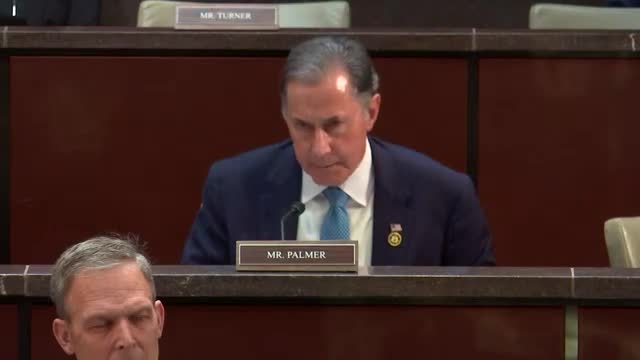Postal Service faces scrutiny over rising stamp prices and executive compensation during reform efforts
This article was created by AI summarizing key points discussed. AI makes mistakes, so for full details and context, please refer to the video of the full meeting. Please report any errors so we can fix them. Report an error »

In a recent meeting of the U.S. House Committee on Oversight and Accountability, the future of the U.S. Postal Service (USPS) took center stage as officials discussed the challenges and strategies surrounding the transition to electric vehicles and the agency's financial health. The atmosphere was charged with urgency as committee members scrutinized the USPS's performance and spending, particularly in light of the significant federal funding allocated for modernization efforts.
Postmaster General Louis DeJoy addressed concerns about the USPS's shift towards electric vehicles, revealing that the agency is working to expand its fleet in response to the $3 billion provided by Congress. "We needed vehicles. This was the way we were able to move forward," DeJoy stated, emphasizing the necessity of this transition despite the anticipated costs. He acknowledged that the average delivery route is relatively short, ranging from 10 to 25 miles, which could facilitate the integration of electric vehicles into daily operations.
However, the meeting also highlighted a troubling trend: the decline in service standards during DeJoy's tenure. A committee member pointed out that the on-time performance for first-class mail had dropped to 85.9%, a significant decrease from the previous year. This decline, coupled with multiple price increases for stamps—six hikes since DeJoy took office—has raised eyebrows among lawmakers. The price of a stamp has surged from 55 cents in 2020 to 73 cents today, prompting questions about the USPS's pricing strategy and overall service quality.
As the discussion unfolded, concerns about DeJoy's compensation also emerged. His total earnings have reportedly increased by 17% since he began, raising questions about the alignment of executive pay with the agency's performance and the financial burden on consumers. "What bothers me is this," one committee member remarked, highlighting the disparity between rising costs for consumers and the increasing compensation for USPS leadership.
The meeting concluded with a commitment to revisit these issues, signaling that the future of the USPS remains a critical topic for lawmakers and the public alike. As the agency navigates the complexities of modernization and service delivery, the implications of these discussions will likely resonate far beyond the walls of Congress, affecting millions of Americans who rely on postal services every day.
Postmaster General Louis DeJoy addressed concerns about the USPS's shift towards electric vehicles, revealing that the agency is working to expand its fleet in response to the $3 billion provided by Congress. "We needed vehicles. This was the way we were able to move forward," DeJoy stated, emphasizing the necessity of this transition despite the anticipated costs. He acknowledged that the average delivery route is relatively short, ranging from 10 to 25 miles, which could facilitate the integration of electric vehicles into daily operations.
However, the meeting also highlighted a troubling trend: the decline in service standards during DeJoy's tenure. A committee member pointed out that the on-time performance for first-class mail had dropped to 85.9%, a significant decrease from the previous year. This decline, coupled with multiple price increases for stamps—six hikes since DeJoy took office—has raised eyebrows among lawmakers. The price of a stamp has surged from 55 cents in 2020 to 73 cents today, prompting questions about the USPS's pricing strategy and overall service quality.
As the discussion unfolded, concerns about DeJoy's compensation also emerged. His total earnings have reportedly increased by 17% since he began, raising questions about the alignment of executive pay with the agency's performance and the financial burden on consumers. "What bothers me is this," one committee member remarked, highlighting the disparity between rising costs for consumers and the increasing compensation for USPS leadership.
The meeting concluded with a commitment to revisit these issues, signaling that the future of the USPS remains a critical topic for lawmakers and the public alike. As the agency navigates the complexities of modernization and service delivery, the implications of these discussions will likely resonate far beyond the walls of Congress, affecting millions of Americans who rely on postal services every day.
View full meeting
This article is based on a recent meeting—watch the full video and explore the complete transcript for deeper insights into the discussion.
View full meeting